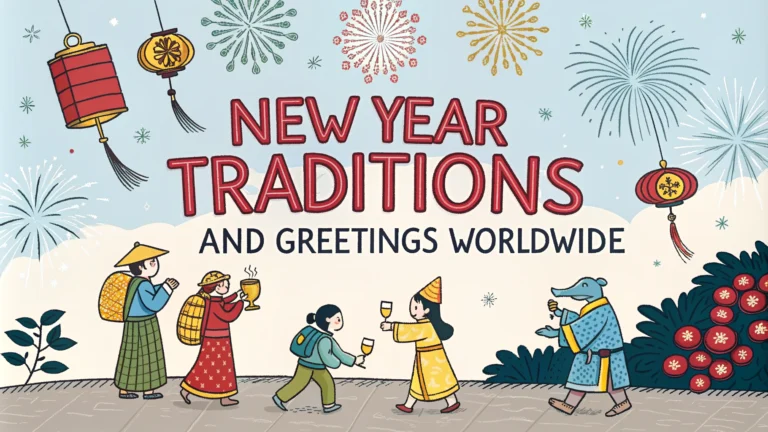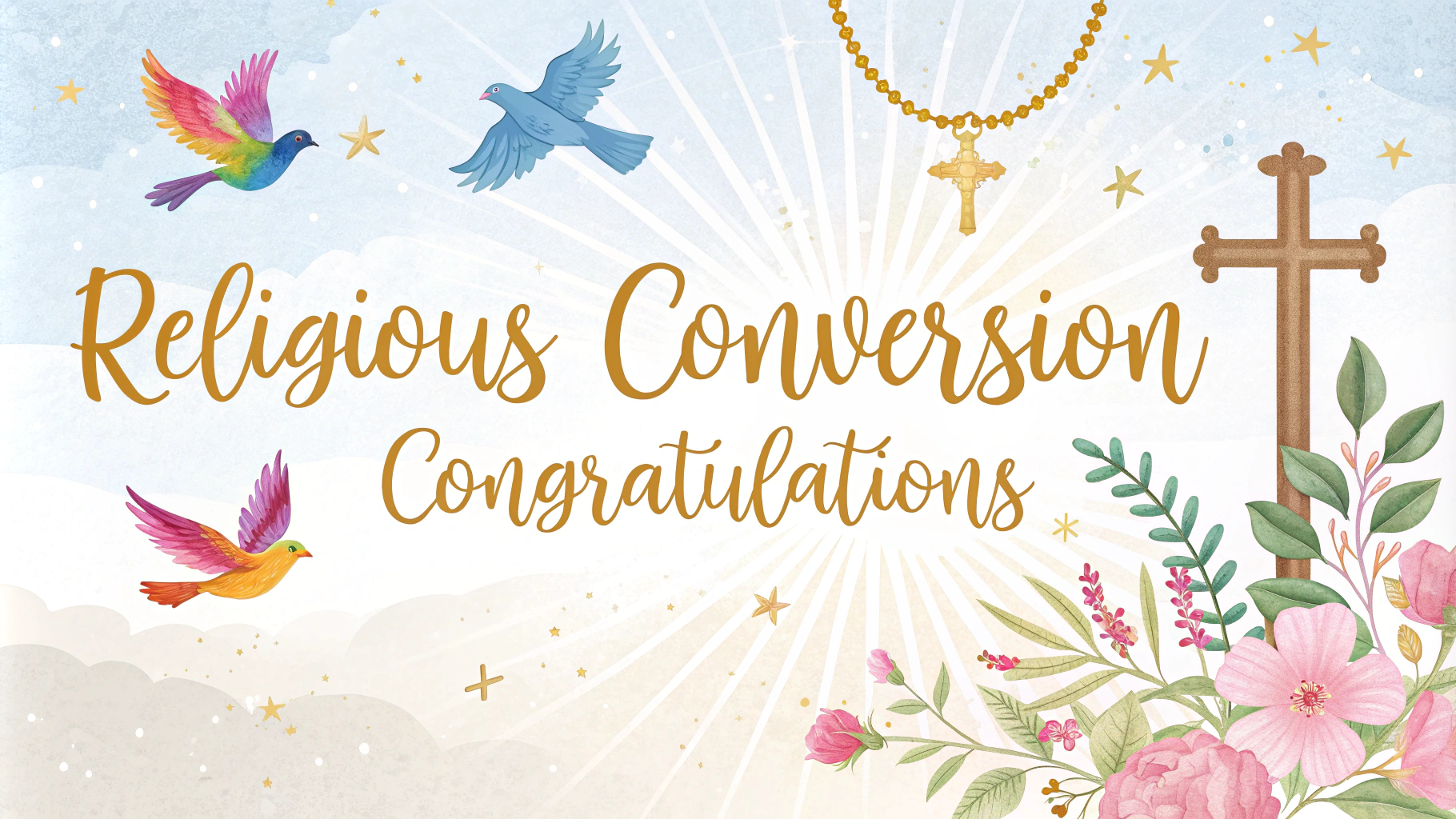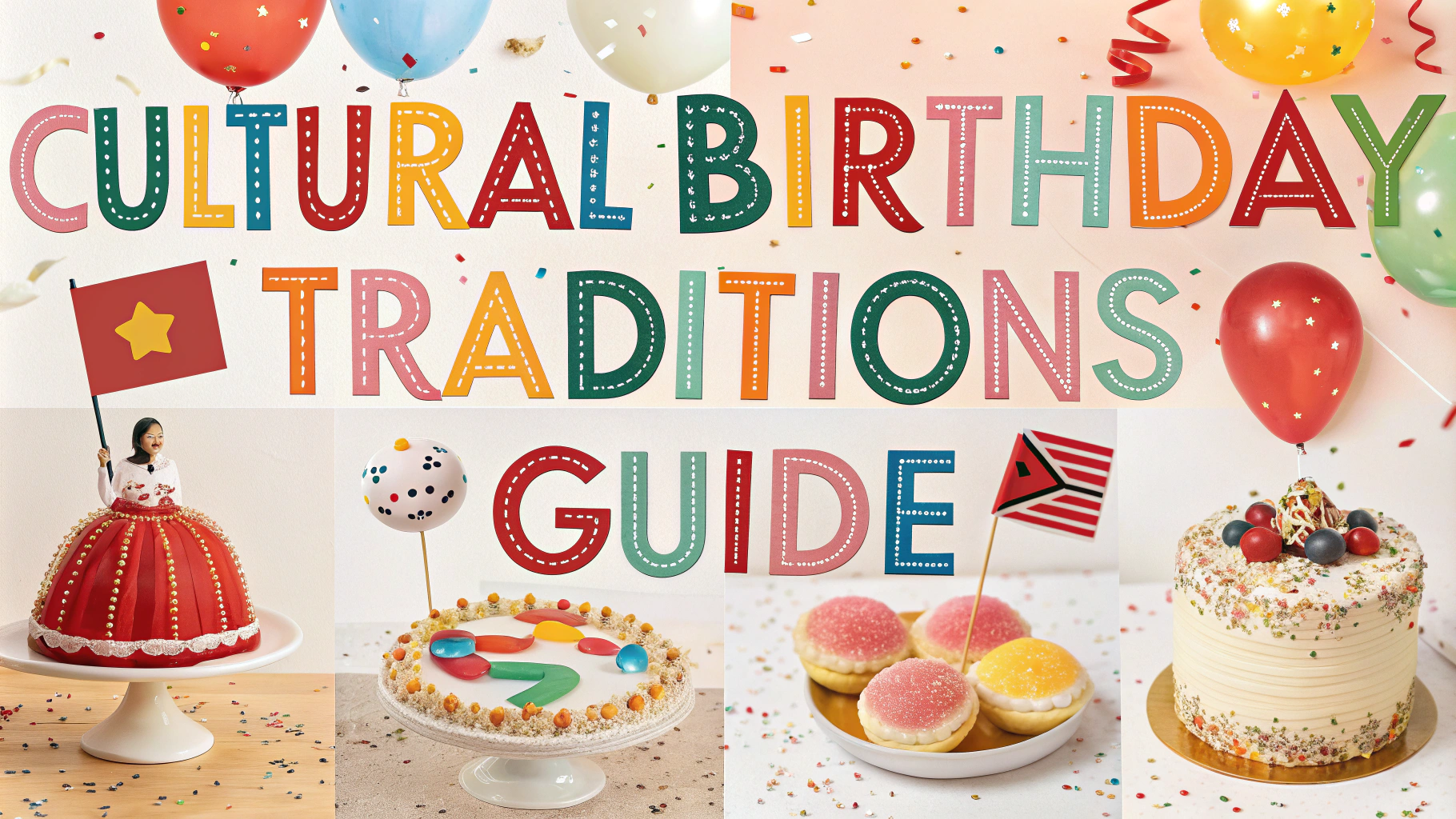New Year celebrations showcase humanity’s rich cultural diversity through unique traditions and greetings practiced around the world.
Asian New Year Traditions
In China, people celebrate with red envelopes (红包, hóngbāo) containing money, given to children and younger family members for good luck.
Japanese families observe Hatsumode (初詣), the first shrine visit of the year, while enjoying special New Year’s foods called Osechi Ryori (おせち料理).
Korean families gather for Seollal (설날), performing ancestral rites and enjoying tteokguk (떡국), a traditional rice cake soup.
European Traditions
- Spain: Eat 12 grapes at midnight, one for each chime of the clock
- Scotland: First-footing tradition where the first person to enter a home brings gifts
- Denmark: Jump off chairs at midnight to “leap” into the new year
- Greece: Hang onions on doors as symbols of growth
Common New Year Greetings
| Language | Greeting | Pronunciation |
|---|---|---|
| Chinese | 新年快乐 (Xīnnián kuàilè) | Shin-nyen kwai-luh |
| Spanish | ¡Feliz Año Nuevo! | Feh-leez ah-nyo nweh-voh |
| French | Bonne Année | Bun ah-nay |
Notable American Traditions
The Times Square ball drop in New York City attracts over a million spectators annually.
Southern United States families eat black-eyed peas and collard greens for prosperity and wealth.
Tips for Hosting a New Year Celebration
- Prepare traditional foods from different cultures
- Create a countdown activity
- Set up a photo area with year-themed props
- Plan cultural activities from various traditions
Modern Digital Greetings
Video calls have become a popular way to connect with loved ones across time zones during New Year celebrations.
Social media platforms offer special New Year filters and effects for sharing celebratory moments.
Environmental Considerations
- Use eco-friendly decorations
- Consider alternatives to fireworks
- Plan for proper waste disposal
- Opt for reusable party supplies
Contact local cultural centers or embassies to learn more about specific traditions: Directory of Diplomatic Missions.
Health and Safety Considerations
- Designate sober drivers for party attendees
- Keep pets indoors during fireworks
- Have emergency contact numbers readily available
- Monitor weather conditions for outdoor celebrations
Music and Entertainment
Traditional Songs
- “Auld Lang Syne” – Scottish traditional song
- “Gong Xi Gong Xi” – Chinese New Year song
- “Toshikoshi Uta” – Japanese New Year song
Entertainment Ideas
- Cultural dance performances
- Fortune telling activities
- Traditional games from different countries
- Musical instrument demonstrations
Decorating Traditions
Different cultures emphasize specific colors and symbols:
- Red and gold in Chinese celebrations
- White and silver in Western traditions
- Rainbow colors in Latin American festivities
Conclusion
New Year celebrations reflect our global interconnectedness while preserving unique cultural identities. As we embrace both traditional and modern ways of celebrating, these diverse customs continue to evolve while maintaining their cultural significance.
Whether celebrating locally or globally, the New Year provides an opportunity to appreciate cultural diversity and create meaningful connections across communities.
Remember to respect local customs and traditions when participating in cultural celebrations, and consider incorporating elements from different cultures to create an inclusive celebration.
FAQs
- What are some of the most common New Year traditions around the world?
The most common traditions include watching fireworks, singing “Auld Lang Syne,” making resolutions, eating special foods for luck, and celebrating with family and friends. In Spain, eating 12 grapes at midnight is traditional, while in Denmark, people jump off chairs at midnight. - How do different cultures say “Happy New Year”?
Different cultures have unique ways to say Happy New Year: “Feliz Año Nuevo” (Spanish), “Bonne Année” (French), “新年快乐” (Xīn Nián Kuài Lè – Mandarin Chinese), “Akemashite Omedetou” (Japanese), and “Frohes Neues Jahr” (German). - What are some traditional New Year foods eaten for good luck?
Black-eyed peas and collard greens are eaten in the Southern United States, lentils in Italy, soba noodles in Japan, rice cakes (tteokguk) in Korea, and dumplings in China. These foods are believed to bring prosperity and good fortune. - When do different cultures celebrate their New Year?
While many countries follow the Gregorian calendar (January 1), Chinese New Year falls between January 21 and February 20, Islamic New Year follows the lunar calendar, and Rosh Hashanah (Jewish New Year) usually occurs in September or October. - What is the significance of fireworks during New Year celebrations?
Fireworks originated in ancient China and were believed to ward off evil spirits. Today, they symbolize celebration and the bright beginning of a new year, with many major cities hosting elaborate fireworks displays. - Why do people make New Year resolutions?
The tradition dates back to ancient Babylonians, who made promises to their gods at the beginning of each year. Today, it represents a fresh start and commitment to self-improvement for the coming year. - What is the significance of the New Year countdown?
The countdown tradition emerged with the standardization of time zones and public clocks. It symbolizes the collective farewell to the old year and welcome of the new one, typically culminating in celebration at midnight. - Why do some cultures wear specific colors during New Year celebrations?
Colors hold cultural significance: red is worn in China for luck and prosperity, white in Brazil for peace and prosperity, yellow in Latin America for abundance and prosperity, and polka dots in the Philippines to represent coins for wealth. - What is the origin of the New Year’s kiss tradition?
The tradition of kissing at midnight originated from European and English folklore, where it was believed that the first person you encountered in the new year would influence your fortunes, and kissing helped ensure good relationships. - What is the significance of “Auld Lang Syne” during New Year celebrations?
“Auld Lang Syne,” written by Scottish poet Robert Burns, translates to “old long since” or “times gone by.” It became a New Year tradition after Guy Lombardo’s band played it at New York’s Roosevelt Hotel in 1929, and symbolizes remembering old friendships and times past.







